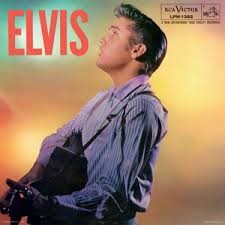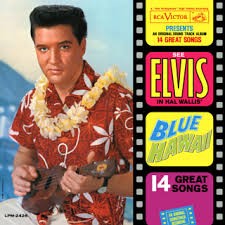Five of the best from Elvis Presley
Five of the best from Elvis Presley
- Elvis Presley (1956) - His debut album, is often credited with helping to establish rock and roll as a mainstream genre. Key Tracks: "Blue Suede Shoes," "Tutti Frutti" Reached No. 1 on the Billboard Top Pop Albums chart and was the first rock and roll album to reach the top of the charts.
- Elvis (1956) - Significance: His second studio album, sometimes referred to as Elvis (No. 2). Key Tracks: "Rip It Up," "Love Me," "When My Blue Moon Turns to Gold Again". Reached No. 1 on the Billboard chart and further solidified his dominance in the rock and roll genre.
- G.I. Blues (1960) - Significance: A soundtrack album for the movie of the same name, it showcased a more polished, pop-oriented sound. Key Tracks: "G.I. Blues," "Wooden Heart". Reached No. 1 on the Billboard Pop Albums chart and was a massive commercial success, particularly in the U.S. and U.K.
- Blue Hawaii (1961) - Significance: Another soundtrack album, this one for the movie Blue Hawaii, which is one of Elvis's most iconic films. Key Tracks: "Can't Help Falling in Love," "Rock-A-Hula Baby". Spent 20 weeks at No. 1 on the Billboard Top Pop Albums chart, making it one of his longest-running No. 1 albums.
- From Elvis in Memphis (1969) - Significance: Considered one of his best artistic achievements, this album marked a significant comeback and shift in his music style. Key Tracks: "In the Ghetto," "Suspicious Minds" (although the latter was not included in the original album release, it was recorded during the same sessions). Peaked at No. 13 on the Billboard 200 but received widespread critical acclaim and is now regarded as one of his finest works.
1. Elvis Presley (1956)

Elvis Presley's self-titled debut album, Elvis Presley (1956), marked a groundbreaking moment in music history. Released when rock and roll gaining mainstream attention, this album played a pivotal role in popularizing the genre. Featuring a mix of rockabilly, blues, and pop, Elvis Presley showcases the young artist’s distinctive voice and energetic style, which would define his career.
The album includes several tracks that became hits, helping to establish Elvis as a major force in the music industry. This debut effort topped the Billboard Top Pop Albums chart and set the stage for Elvis Presley’s rise to fame. With its influence on rock and roll and its role in shaping the future of popular music, this album remains a cornerstone of Elvis’s legendary discography.
2. Elvis (1956)

The 1956 album Elvis continues the momentum of his explosive debut in the rock and roll scene. Released later the same year, this album solidified Elvis as a leading figure in the music industry. Elvis features a dynamic blend of rock and roll, rhythm and blues, and pop, showcasing Presley's versatility and charismatic vocal style. This album’s success was marked by its strong performance on the Billboard Top Pop Albums chart, where it achieved critical acclaim and commercial success.
By offering a mix of upbeat tracks and emotional ballads, Elvis helped define the sound of rock and roll and cemented Presley’s place as a major musical icon. This release is an essential part of Elvis Presley’s discography, illustrating his influence on the evolution of modern music and his ability to captivate audiences with his innovative sound.
3. G.I. Blues (1960)

The 1960 album G.I. Blues serves as a vibrant soundtrack to the film of the same name, capturing the essence of the era with its upbeat and diverse musical styles. This album marks a notable shift in Presley’s career as he transitioned from his earlier rock and roll hits to a more polished pop sound. G.I. Blues showcases Elvis’s ability to blend light-hearted, catchy tunes with his distinctive vocal style, reflecting the film's upbeat and entertaining narrative.
The album achieved significant commercial success, topping the Billboard Pop Albums chart and further establishing Elvis as a versatile artist. By featuring a mix of romantic ballads and lively, energetic tracks, G.I. Blues highlights Presley’s adaptability and charm, continuing his strong presence in popular music and reinforcing his status as a cultural icon of the 1960s.
4. Blue Hawaii (1961)

Elvis Presley’s 1961 album Blue Hawaii is a standout release in his discography, reflecting the laid-back charm of the Hawaiian setting from the film of the same name. This album marks a significant moment in Elvis's career, showcasing his smooth vocal style through a collection of breezy, island-inspired tracks. Blue Hawaii combines romantic ballads with upbeat tunes, capturing the essence of the movie’s tropical theme. The album enjoyed remarkable commercial success, reaching No. 1 on the Billboard Top Pop Albums chart and staying there for an impressive 20 weeks.
With its blend of catchy melodies and Elvis's engaging performance, Blue Hawaii highlights his versatility but also contributed to his enduring popularity in the early 1960s. This release remains a beloved part of Elvis Presley’s legacy, representing a key period in his transition from rock and roll to a more mainstream pop sound
5. From Elvis in Memphis (1969)

The 1969 album From Elvis in Memphis marks a pivotal moment in his career, showcasing a return to form with a fresh and powerful sound. Recorded in the vibrant city of Memphis, this album represents a significant shift in Presley’s music, moving away from the Hollywood soundtracks and back to his roots in rock and roll and soul. From Elvis in Memphis features a mix of heartfelt ballads and energetic tracks, demonstrating Elvis’s versatility and emotional depth. T
he album received critical acclaim for its production quality and Presley’s compelling performances. It achieved notable commercial success, reaching No. 13 on the Billboard 200 and reinforcing Elvis’s status as a major musical force. With its blend of rock and roll and soul influences, From Elvis in Memphis is a key release in his discography, highlighting his artistic resurgence and continued relevance in the late 1960s music scene.
Recent Posts
Queen studio albums: A Review
Phil Collins Albums Ranked & Reviewed – Complete Guide to Every Studio Album
The best of Massive Attack
Let’s Make Magic
Book Your Event DJ Now




